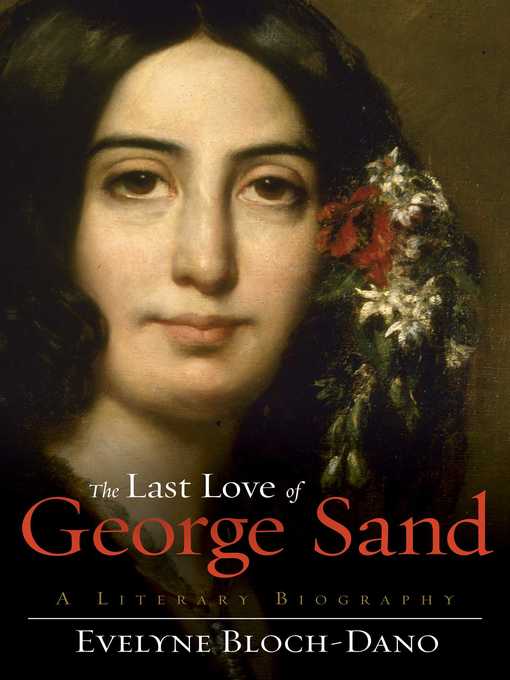
The Last Love of George Sand
A Literary Biography
- اطلاعات
- نقد و بررسی
- دیدگاه کاربران
نقد و بررسی

January 14, 2013
A writer whose work was often compared to that of Flaubert, Stendahl, and Balzac, George Sand had her choice of celebrity lovers (among them Chopin and Mérimée) but found “the man of her dreams” in a relatively unknown artist who was 13 years her junior, as this impassioned biography contends. That man was Alexandre Manceau, an engraver who was friends with Sand’s son, Maurice, and who moved in 1849 to Nohant, where a dispirited Sand was recovering from the failed revolution of 1848. Focusing on the years 1849 to 1865 (the year of Manceau’s death), Bloch-Dano (Madame Proust) uses the couple’s experiences as touchstones for exploring key aspects of Sand’s life: her gloomy first marriage; her relationship with her son and daughter, Solange; the salon society of leading literati and Continental artists to which she belonged; her bohemian lifestyle; her fervent support of the Republic; and her prodigious literary output. During these years, Sand published a staggering 26 novels and 20 plays, many of them facilitated by Manceau’s involvement in her life. Bloch-Dano brings Sand vividly to life through a wealth of quoted letters and memoirs, though somewhat at the expense of Manceau, who never really emerges from Sand’s shadow. Charette’s translation is serviceable, though sometimes clichéd. Nevertheless, readers who know Sand largely through her outsized literary reputation will find this portrait of her as a love-smitten romantic intriguing. The French Publishers’s Agency.

Starred review from January 1, 2013
Delightful reconstruction of the deeply fulfilling, late-life romance of the French novelist with a devoted, younger engraver. Obviously a labor of love, this work by the accomplished French biographer Bloch-Dano (Vegetables: A Biography, 2012, etc.) is highly entertaining and original. The author sees her job as reassembling the life of her subject from scattered pieces and "the ravages of time" and then, if all else fails, using her imagination to fill in the details much like a novelist. The result is a series of pointed assertions like light bulbs going off in her head, questions and switching to the present tense, all while sticking to the courageous, romantic spirit of her subject. George Sand was in her mid-40s when her son brought his engraver friend Alexandre Manceau to spend the holidays of 1849 at her beloved ancestral home, Nohant. A famous novelist and playwright, she was now bone-weary after the failures of the socialist revolution of 1848, into which she had thrown herself, and strapped by debts and squabbles with her headstrong daughter. Nohant had always served as her refuge, in between bruising stints in Paris and maternal love affairs with a series of "men-children." Bloch-Dano ably portrays Sand's attraction to the 32-year-old engraver, a man of modest beginnings and much talent, highly intuitive, intelligent and devoted to Sand. Manceau not only took over the theatrical productions at Nohant, but also assumed the role of her secretary and copyist, living with her for 14 years while plying his commissions as a sought-after engraver. Bloch-Dano's portrait is poignant and beautifully researched. A love story probably suppressed by Sand's resentful son, brought here to vivid life in the hands of her capable biographer.
COPYRIGHT(2013) Kirkus Reviews, ALL RIGHTS RESERVED.




دیدگاه کاربران